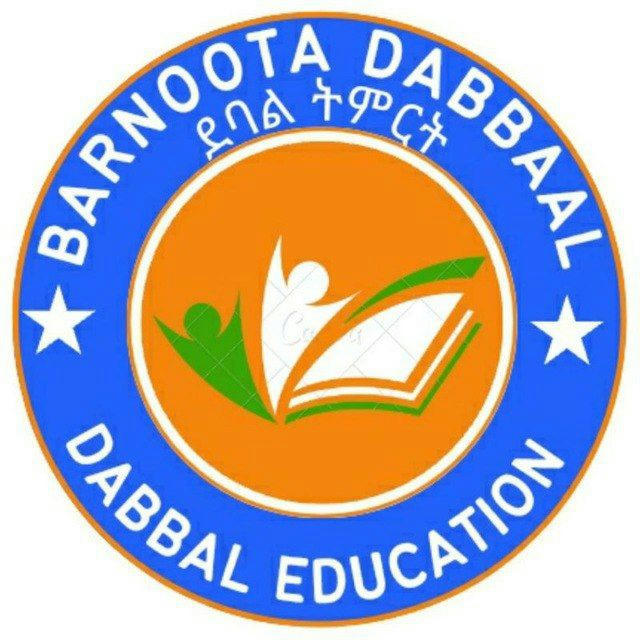
Dabbal New Education
Chaanaalii HAARAA kana irratti wantoota baay'ee argattu .Join godha I Love all oromo people in worldwide 👉 ❤️💚❤️ @Facebook page Follow gadhaa. https://www.facebook.com/profile.php?id
Больше- Подписчики
- Просмотры постов
- ER - коэффициент вовлеченности
Загрузка данных...
Загрузка данных...
Heterogamety.
2) ZZ – ZW type: In birds 🕊and some reptiles, the males are represented as ZZ (homogamety) and females are ZW (heterogamety).on ilmaan lama(2)dhale.
1- Booranaafi
2-Bareentuu
Booranni Ilmaan 12 dhale
Isaanis
1-Wallagga
2-Callabba
3-Goree
4-Goofaa
5-Sidaamoo
6-Arii
7-Dacee
8-Garrii
9-Guraa
10-Giriirraa
11-Naayroobii fi
12-Gujii
Bareentuun Ilmaan 5
dhale
1. xummuungaa
2-murawwaa
3-karrayyuu
4-Hunbanna
5-Qal’oo
Xummuungaan Ilmaan 3 dhale
1-Arsii
2-Asoosaa
3-Hawaasaa
Murawwaan 1 dhale
Innis:- Ituudha jedhama
Ituun 10 dhale isaanis:-
1-waatee
2-Gaamo
3-Baayee
4-Galaan
5-Addaayyo
6-Baabbo
7-Waaree
8-Algaa
9-Gaaddullaa
10-Elellee
Karrayyuun Barentuu
Ilmaan 12 dhale
1-Dullachaa
2-Abbichuu
3-Gonbichuu
4-sayyuu
5-Oboo
6-Oborii
7-Jiillee
8-Bullaalla
9-Mucee
10-Galaan
11-Salaalee
12-Wallo
Hunbannaan Ilma 1 dhale
Innis:-
Anniyya jedhama
Anniyya 7dhale
1-Malkaa
2-Baabboo
3-Dinbii
4-Baaduu (biduuu)
5-muci
6-Naannaa'a
7-kudheedhee
Qallo 4 dhale
1-Ala
2-Daga
3-Oborraa
4-Baabbile
Ala 12 dhale
1-Abbayi
2-Nuunnu
3-kaaku
4-Buubbu
5-Diiramu
6-Abbaadho
7-Goollo
8-Eeri
9-Utayyu
10-Galaan
11-Meettaa
12-Arroojji
Daga 3 dhale
1-Noolee
2-Jaarsoo
3-Huume
Oborraan 3 dhale
1-Akkichu
2-bil'I
3-Dooranii
Baabbile 3 dhale
1-Gantuub
2-Hawiyyaa
3-Hawaasilee
Arsiin 2 dhale
1-sikkoo
2-mandoo
sikko 5 dhale
1-Bullaalla
2-Wucaale
3-wooji
4-Jaawwi
5-Ilaannii
Mando 7dhale
1-Raayituu (Raa'idoo)
2-Hawaxxuu
3-Karaara
4-karrayyuu
5-Meettaa
6-Arroojii
7-Garjeeda
Akkichuu Oborraa ilma 2
dhale
1-dhaayi
2-biliidaa
Dhaayi 3 dhale
1-Dukkoo
2-Kooyee
3-Allaatayya
Billiidaan 3 dhale
1-Godaanaa
2-busaa
3-Allaa
Gujiin Boorana 3 dhale
1-Hookkuu
2-Uraagaa
3-Matii (maatii)
Hookkuun 7dhale
1-Galalcha
2-Oborraa
3-Michille
4-Heeraa
5-Bundhituu
6-Kinnoo
7-Baallaa
Uraagaan 6 dhale
1-Goolloo
2-Hallaa'oo
3-Agantuu
4-Daraartuu
5-Sarboortuu
6-Waajituu
Maatiin 3 dhale
1-Hirqaantuu
2-Linsoolee
3-Hunde
Maddii issaa namaa Oromoo bule irraayyi
👈☜ #share gochuun......Barattoota Kutaa 12ffaa Foormii Qorumsa Biyyoolessaa Kan Bara 2016 Guuttan Hundaaf: ■. Qormaanni moodeela kutaa 12ffaa bara kanaa guutuu Oromiyaatti guyyaa 21-23/09/2016ti akka kennamu sagantaa mana barumsaan isin beeksisuun keenya ni yaadatama. ■. Waan ta'eef barattoonni keenya hundinuu mirgaa fi dirqama barataa yeroo qormaataa hubachuun/ yaadachuun hojiirra oolchuu qabdan. ■ Qormaanni moodelaa kun shaakalli qorumsa biyyoolessaa waan ta'eef waaree duraa fi booda sa'a 2: 30/ 7:30 irraa eegalee kennama. 1. Dirqama Barataa ~ Qorumsaaf of qopheessuun Yeroon iddoo qorumsaatti argamuu. ~ Uffataa danbii/uniform uffachuu. ~ Meeshaalee qorumsarratti hin hayyamamne qabatanii argamuu dhabuu Fkn. -Bilbila kamiyyuu - Dabtara - kitaaba - yaadannoo - Calculator fi kkf. ~ Ofitti amanuun of danda'uun kan ofii qofa hojjachuu. ~ Sa'atii qorumsaaf hayyamame keessatti qorumsa xumuree/tee kennuu. 2. Mirga Barataa ~ Qorumsi …
Ваш текущий тарифный план позволяет посмотреть аналитику только 5 каналов. Чтобы получить больше, выберите другой план.
